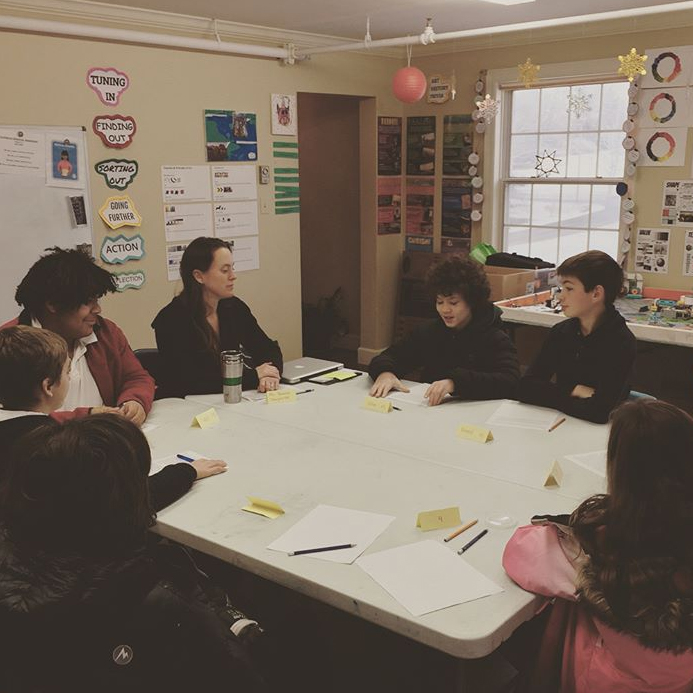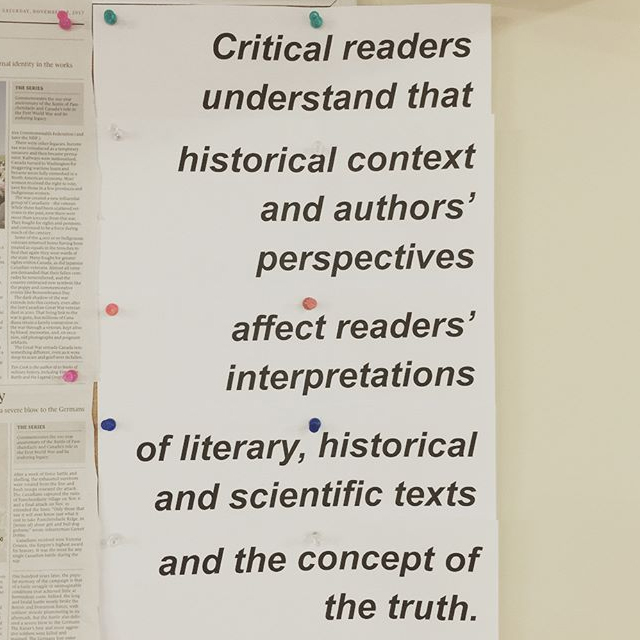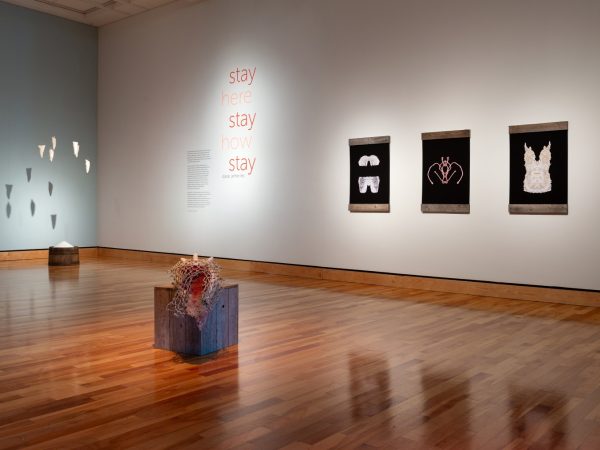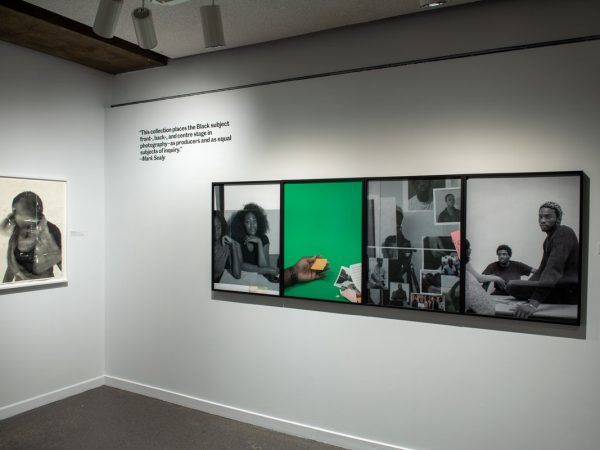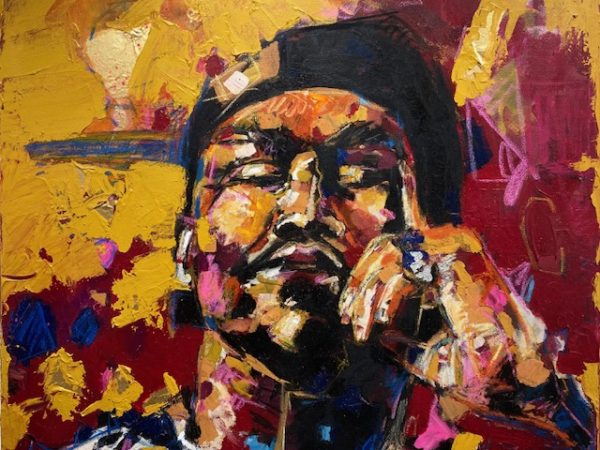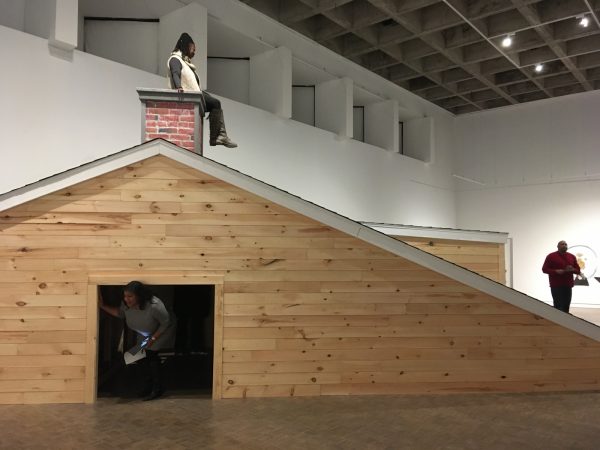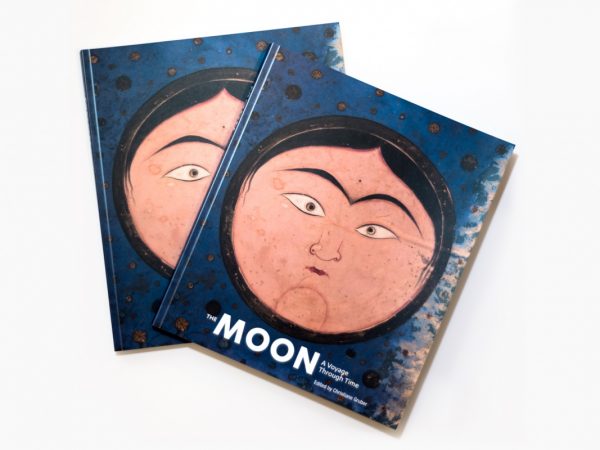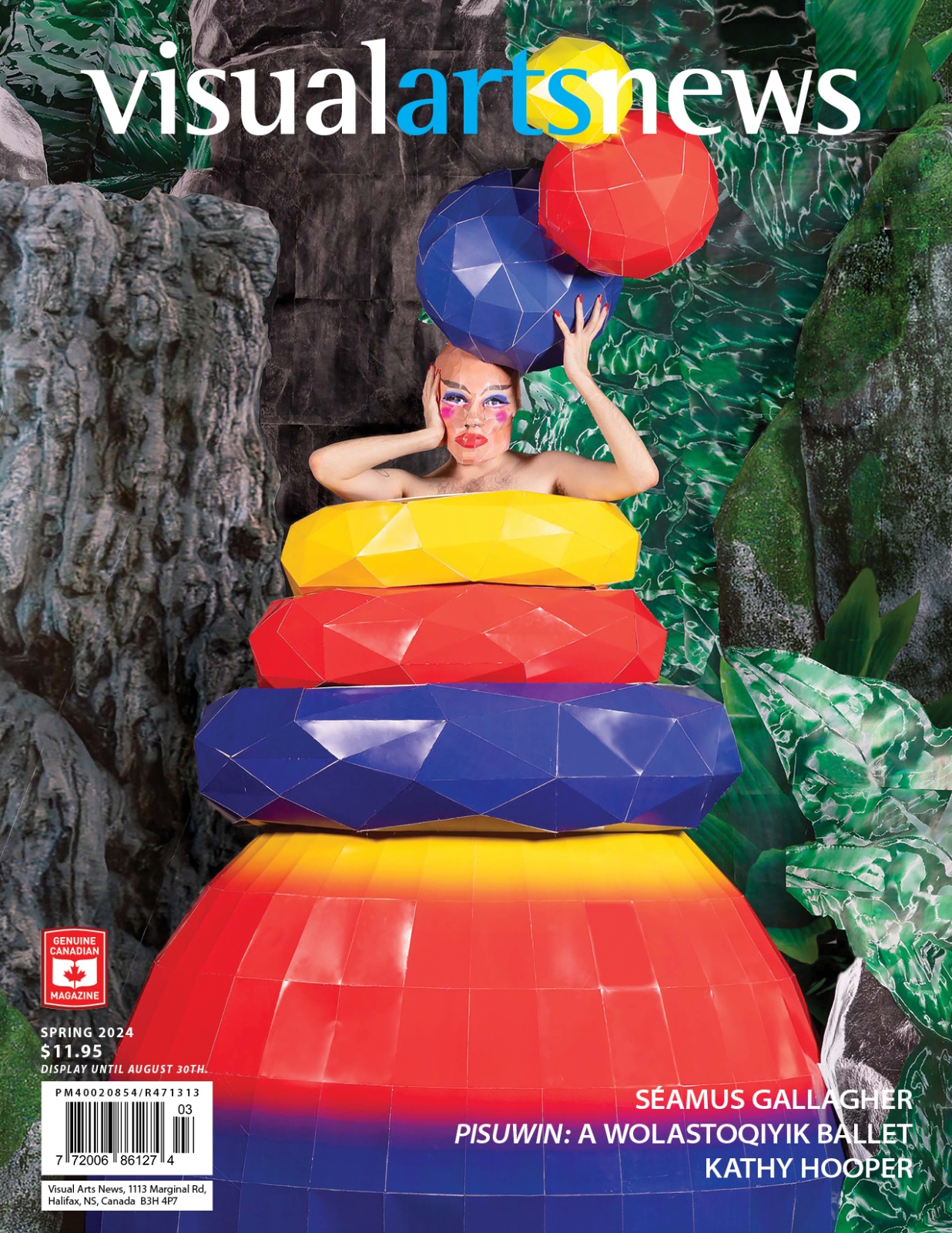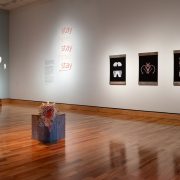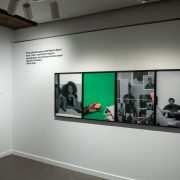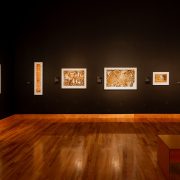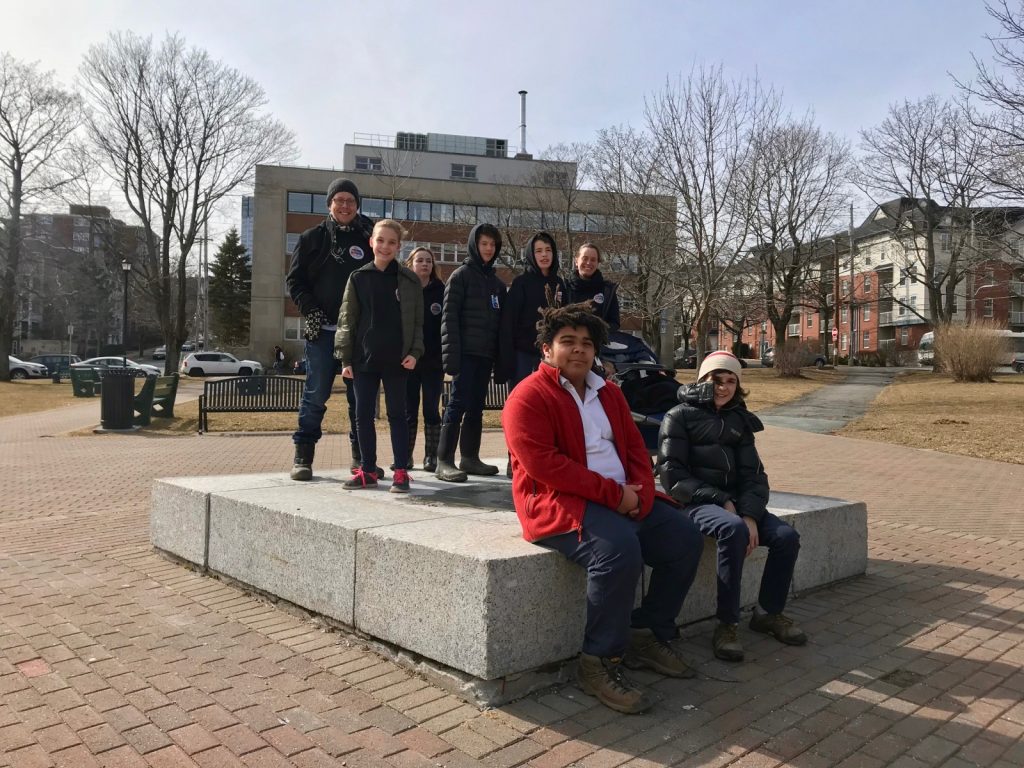
In Nova Scotia and elsewhere people are grappling with the issue of what to do with monuments associated with a painful past, and are asking whether the action of tearing down statues like that of Edward Cornwallis in Halifax helps to redress a history of violence, or whether the removal simply hides or disguises what has happened. In thinking through the dilemma posed by this question, we are forced to consider when it is appropriate to remove a monument, what should happen to it when it is taken down, and what to do with the space left behind. I suggest that the artist and the counter-monument movement have a role in reconciling these issues.
Traditionally, monuments have been erected to glorify an event, person, or ideology. However, the intended meaning of a monument is never fixed but changes depending on the socio-political climate and our understanding of history. When we come to recognize the atrocity or violence of the past, the meaning of the monument changes. It is now a signifier of a painful past and its presence symbolizes pain.
Destroying or removing a monument is an act of distinguishing our contemporary values from offensive actions of the past. Removing a monument like the statue of Cornwallis and leaving the empty pedestal in place indicates an absence: one that is a symbol of decolonization and reconciliation. The empty pedestal represents the stories that have been omitted from the dominant discourse. The action of putting something in the statue’s place could continue to silence these missing stories. But is leaving the empty pedestal enough?
It is impossible to discuss memory and commemoration without looking at the work of James E. Young on Holocaust memorials and the idea of the monument and its role in public memory. He introduced the German concept of Gegendenkmal, which translates to “counter-monument.”
The counter-monument movement emerged in Germany following World War II, as the country was grappling with how to commemorate the atrocities of the Holocaust and its devastating loss. People began to reject traditional monuments and their implied values. They argued that public memorial art and monuments were being built as substitutes for remembering the events, and that the lack of engagement with the monument once built, was in actuality, a way to forget.
Counter-monuments are difficult to define, but, in general, they disrupt dominant narratives through action, performance, or installation in a way that critically draws on the principles of the traditional monument form and its language and values. Despite their connection to traditional monuments, counter-monuments do not always have monumental qualities, according to Young. Rather, he defines them as “brazen, painfully self-conscious memorial spaces conceived to challenge the very premises of their being.”[1]
Academics, architects, and artists have been deeply engaged with questions regarding how to commemorate the absence of a people as happened in the Holocaust, and also, how such ideas about commemoration can be applied to other complex memorial spaces around the world. Contemporary approaches explore themes of inversion and absence. Prominent forms of these themes might include a focus on site-specificity, abstraction, transparency, reflectivity – often through the use of polished surfaces, the removal of pedestals to bring monuments closer to the ground or even into the ground, and the use of plaques. These contemporary memorial spaces and counter-monuments serve to engage and bring the viewer into the space where they have to make an effort to interpret the multiple meanings of the memorial.[2]
A significant example of a counter-monument is Horst Hoheisel’s “Aschrott Fountain” in Kassel, Germany. In 1939, at the outbreak of WWII, a fountain designed for the city by architect Karl Roth in 1908 and funded by Jewish entrepreneur Sigmund Aschrott was demolished by local Nazis. In the years following, over 3000 Jews were deported from Kassel and killed. After the war, the fountain was temporarily filled with dirt and flowers planted. Locals called it “Aschrott’s Grave.” In 1984, the city of Kassel invited artists to restore the Aschrott Brunnen Fountain. Hoheisel disagreed with the city’s decision to restore the fountain. In his proposal, he stated that by reconstructing the Aschrott fountain, people in the city would forget why it had been destroyed in the first place, thereby erasing the awful violence. Already, people in Kassel assumed it had been destroyed by British air raids during the war. Instead of rebuilding the fountain, Hoheisel proposed a negative-form monument by inverting a hollow concrete structure of the original fountain’s form into the ground. Viewers engage with the monument by standing on the glass covering the void, looking down through their own reflection into the fountain’s internal structure as ground water runs through it. Young discusses the Aschrott Fountain in Memory and Counter-Memory, asking, “How does one commemorate an absence?” He answers his own question, “In this case, by reproducing it… Hoheisel has left nothing but the visitors themselves standing in remembrance, left to look inward for memory.”[3]
The intention of the “Aschrott Fountain” is for viewers to engage with the memorial space and to encounter feelings of loss and displacement: to be reminded of the original destruction and devastating void of the Holocaust. This work provides great insight into how contemporary memorial spaces and counter-monuments can help communities decide when it is appropriate to remove a monument or, instead, when to invite artists to find alternative ways to engage viewers with memorial spaces, acknowledge outdated values, and disrupt the invisibility of omitted narratives from dominant discourses of the past.
In 2017, Grade 6-8 students at The Booker School in Port Williams, Nova Scotia, participated in an inquiry-based project surrounding the controversy of the Cornwallis statue. Their teacher, Ms Temma Frecker, was awarded the 2018 Governor General’s Award for Teaching Excellence in History for developing the interdisciplinary project.
The students are regularly encouraged to look at reconciliation issues in Canada. For this project, they learned about the complicated legacy of Edward Cornwallis. They recognized his contributions to history, while also acknowledging that Mi’kmaq peoples have been here for 14,000 years and have suffered directly from his scalping proclamation. A large portion of their work focused on understanding the relationships between Nova Scotia’s British and French settlers and the Mi’kmaq peoples.
Through a holistic approach, the students examined the socio-historical context of the statue by looking at multiple perspectives. This process led them to better understand the reasons why many contemporary groups wanted the statue removed. Though they agreed with this action, the students came up with their own proposal titled, “The Conversation.” The students proposed to remove the statue of Cornwallis from the pedestal and place it on the ground, standing among three additional statues who represent African Nova Scotians, Acadian, and Mi’kmaq histories.
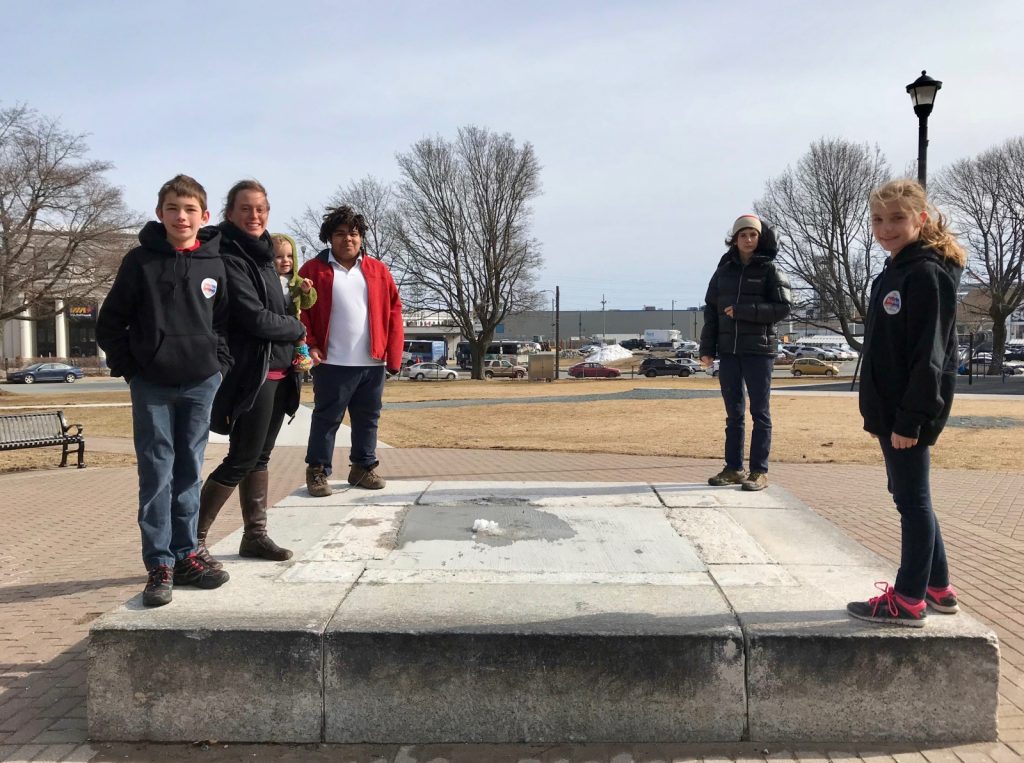
The statues would be accompanied by plaques noting both positive and negative aspects of our history. They chose Grand Chief John Denny Jr. (1841-1918), Viola Desmond (1914-1965), and Noel and Marie Doiron with a child (1684-1758) to join Cornwallis – all facing one another in conversation. The students recognized that each of these figures have something to teach us about Nova Scotian values and important ideas. The interactive space and informational plaques would enable people to learn from and critically question the past and engage with the memorial space.
Projects like this provide an opportunity for real change through discussion and listening to multiple perspectives. In Counter-Memorial Aesthetics, Veronica Tello confirms that “[d]ifferential knowledge is what allows history and counter-memory to perform its critical work: to critique the notion of the singular monument born of a single origin.”[4] Through critique, the Booker School students came to understand how, together, triumphs, failings, loss, and hardship shape our current realities. Their project and final proposal show how we can approach reconciliation (or reconcili-action) and decolonization through education by looking to counter-monuments as a way to commemorate and include diverse narratives of the past.
Given the removal of the Cornwallis statue and other monuments to Canada’s colonial heritage, we cannot ignore the interesting parallels between the decolonization of Canada and the decommunization of post-Soviet countries in Europe. The removal of monuments and iconography is a central pillar of change in both.
Post-Soviet countries have destroyed or removed statues of Stalin and Lenin and other Soviet iconography from public spaces. Streets, parks, and cultural buildings named after Lenin have been renamed. Thousands of empty pedestals where Lenin once stood are left in place, many with his name still etched in the stone. These monuments represent dependence on and oppression by the former Soviet Union, and their removal is an active symbol of independence through decommunization.
Similarly, the removal of the Cornwallis statue can be seen as a step towards healing, reconciliation, and most of all, action. The physical act of removing this figure shows that the municipality of Halifax recognizes and acknowledges its painful past. It is an action that included Indigenous and non-Indigenous voices together in the process of advancing Canadian reconciliation through decolonization. Across Canada, Indigenous names of place are being recognized and reclaimed. In both cases, though, in post-Soviet decommunization and Canadian decolonization, we must ensure that we are not left with only empty pedestals and debate and no action.
I believe that the counter-monument movement in Europe and the decommunization of post-Soviet countries can be analyzed and applied to our Canadian context. This approach can help us begin to reconcile monuments with a painful past and decide when it is appropriate to remove a statue or monument and what happens when it is taken down.
Rather than erasing Canada’s violent history, I propose that we place it within its historical context through counter-monuments and education. When decisions are made to build or remove monuments and memorial spaces, we need to critically examine their socio-historical context, the current context, what these actions symbolize, and what they may symbolize for future generations (given the ever-changing nature of monuments). When looking at whose history is being commemorated, we also need to recognize the voices of those whose history has been or is being omitted because of our actions.
Counter-monuments and their function as memorials are a site of constant struggle as their meaning and their socio-historic and aesthetic contexts are ever changing. This struggle to memorialize is often embodied in the temporal and ephemeral qualities of counter-monuments, their very temporality reflecting the fleeting nature of memory and the need for it to be continuously revisited.
As suggested by Sue-Anne Ware in Anti-Memorials and the Art of Forgetting, “In this way the design outcomes become physical catalysts for social change.”[5] For this reason, I see real purpose in not only creating counter-monuments, but also building the components for recognition and reflection into our education system to be revisited over and over again.
Finally, it is important to remember that it is difficult to create a counter-monument without the context of the original. As is the case with the Cornwallis statue, once a monument is removed, the empty pedestal may become a vessel by which we can acknowledge the atrocities of our history.
However,
this space must be available for artists and the community to explore. These
colonial spaces provide opportunities for dialogue about our national history
and how we can take action and move forward as a culture.
[1] James E. Young, At Memory’s Edge: After-Images of the Holocaust in Contemporary Art and Architecture. (New Haven, London: Yale University Press, 2000), 11.
[2] Quentin Stevens and Karen A. Franck. Memorials As Spaces of Engagement: Design, Use and Meaning. (New York, London: Routledge: Taylor & Francis Group, 2016), 43.
[3] Young, “Memory and Counter-Memory,” Harvard Design Magazine, Vol. 9, Constructions of Memory: on Monuments Old and New (February 1999, n.p.). (no page number).http://www.harvarddesignmagazine.org/issues/9/memory-and-counter-memory (accessed 21 Feb. 2019).
[4] Veronica Tello. Counter-Memorial Aesthetics: Refugee Histories and the Politics of Contemporary Art. (London, Oxford, New York: Bloomsbury Academic, 2016), 15.
[5] Sue-Anne Ware. Anti-Memorials and the Art of Forgetting: Critical Reflections on a Memorial Design Practice. Public History Review, No 1. (UTS ePress and the author, 2008), 75.

